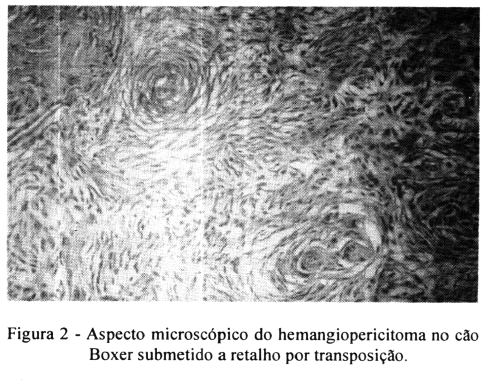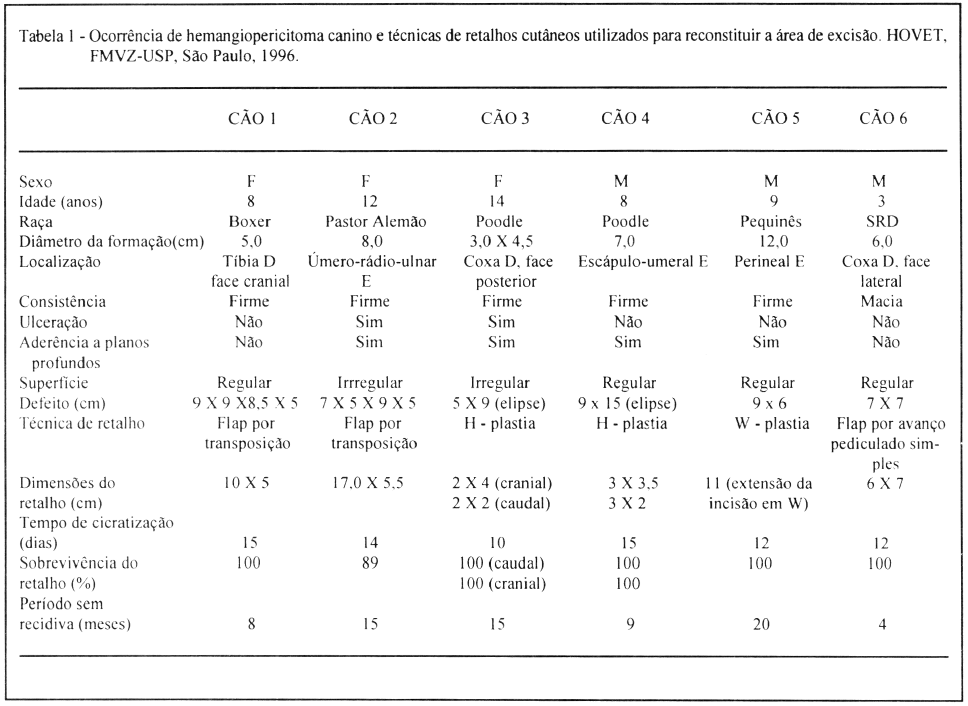Canine hemangiopericytoma is a relatively common cutaneous tumor frequently affecting the limbs. Treatment usually is local resection, limb amputation and radiation, with high rates of tumor recurrence. The medical records of 6 dogs treated at the Veterinary Teaching Hospital of the University of São Paulo between July 1994 and July 1996 were reviewed for tumor features, skin flap technique and postoperative follow up. The dogs in this study were 3 females and 3 males; the mean age was 9 years. One dog was mixed breed and the other dogs were Poodle (2); Boxer (1); German Shepherd(1) and Pekingeese(1). The majority of tumors (5 tumors) were located on the limbs and l was located on the perineal region. Skin flap techniques used were : H- plasty (2), W-plasty(1), transposition flap (2), single pedicle advancement flap (1). The sutures were removed 10 to 15 days after surgery. Five dogs had 100% viability of flap skin and necrosis ocurred in one dog which had a survival of 89% of the flap. One dog died 15 months after the surgery because of nontumor related causes. No evidence of recurrence was noted and tumor free interval ranged from 4-20 months. Wide surgical excision of the canine hemangiopericytoma seems to be an eficient therapy since no recurrence ocurred. Familiarity with techniques of skin flap creation can provide the surgeon with alternatives to close a large wound resulting from tumor excision. Skin flaps can bypass many problems in open wound management including delayed healing and greater expenses.
skin flap; canine hemangiopericytoma

 Surgical treatment of canine hemangiopericytoma using skin flap
Surgical treatment of canine hemangiopericytoma using skin flap

